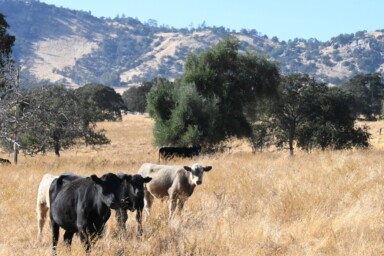After taking part in last month’s Big Plastic Count, the SFT’s Isabel Eaton felt prompted to explore our over-reliance on plastic-wrapped produce. Here, Isabel explains how this material is ending up in our seas and soils as well as our bodies, and how and where to shop for plastic-free alternatives.
Our food system has a big plastic problem. The material is present from field to fork, but it’s in supermarkets where – confronted by aisle after aisle of plastic-wrapped goods – the scale of the issue becomes most visible for many of us. As a diligent recycler, a keen frequenter of zero waste stores and someone who recently crashed their car whilst distracted by roadside litter (nobody was harmed!), it’s fair to say that I am conscious of waste. However, my participation in the Big Plastic Count this March highlighted a sizeable personal plastic footprint, largely formed of fruit and vegetable packaging, and the extent of our overall reliance on plastic-wrapped produce.
When Greenpeace and Everyday Plastic organised the first Big Plastic Count in 2022, the data that they gathered from households across the UK revealed not only the extraordinary amount of household plastic waste that we generate each year, but also the significant contribution of food and drink packaging towards the unsightly total. Of the estimated 96.6 billion items of plastic packaging thrown away in 2022, 83% came from food and drink.
Plastic packaging has revolutionised the food industry – low cost, lightweight and adaptable, it increases product lifespan, eases the transport of imported foods, helps with hygiene and preserves nutritional value. Essentially, it enables our globalised food systems to function.
But, as we are increasingly aware, this reliance on plastic poses a big problem for the planet. From the point at which it is produced using fossil fuels, to the point at which the consumer comes to dispose of it (usually after just one use), plastic is polluting, and our waste systems simply cannot cope. According to the Big Plastic Count’s 2022 report, which uses statistics from RECOUP and WRAP, in the UK just 12% of our plastic waste went on to be recycled. Of the remainder, 46% was incinerated, 25% ended up in landfill and 17% was exported to be dealt with by other countries – typically those less wealthy and often poorly resourced.
Plastic that ends up in an incinerator releases toxic gasses and more than two tonnes of CO2 for every tonne of dense plastic burned. The plastic that goes to landfill also releases greenhouse gasses as it breaks down slowly into microplastics. These tiny fragments can now be found in every corner of the planet, from the bottom of our oceans to the top of our mountains, meaning that plastic is in our seas, in our soils and, inevitably, in our bodies.
Of course, recycling is a good thing, and the appearance of soft plastic recycling schemes in many supermarkets is a positive step, but the message from Greenpeace and other organisations is that recycling is no longer enough – reducing our use of plastics is now crucial.
Supermarkets have a big role to play in this. Although many are making efforts to offer more loose fruit and vegetables as well as refill options for other products, they continue to overpackage and to incentivise the purchase of plastic-wrapped produce over loose, sometimes by offering lower prices for multi-packed goods. This practice not only creates unnecessary plastic waste, but also encourages shoppers to buy more than they need, which may then lead to food waste – another big issue for the planet, with 40% of all food across the globe thrown away.
Supermarkets also typically sell their organic produce in plastic packaging, even when the equivalent non-organic fruit or vegetable is available loose. This is ostensibly to stop organic produce from getting mixed with non-organic produce, but for the environmentally conscious shopper it poses a dilemma.
When I counted my own plastic waste between the 11th and 17th of March for the Big Plastic Count this year, I generated 20 pieces of plastic waste, 75% of which came from food. This may be less than the UK average but would still amount to an alarming 29.2 billion pieces in a year if every household in the country produced the same as me.
Like many people, I would love to achieve a plastic-free weekly food shop, but it remains out of reach for most, with local amenities, budget and time, proving significant barriers. However, if you’d like to at least reduce your food and drink plastic footprint, there are lots of ways to go about it, many of which may enable you to support small local businesses and enjoy locally grown seasonal produce at the same time.
When shopping for plastic-free fresh produce, local farm shops, greengrocers, markets and veg box schemes are all good places to start. Milk can be delivered to your door in glass bottles by Milk & More or a local dairy farm – many of which are finding direct sales the best way to sell their milk. Whilst unwrapped bread can be bought from a local baker, if you are lucky enough to have one nearby.
For dried goods and oils, zero waste shops have cropped up across the country in recent years. The range of produce varies from store to store, but if you take along empty tubs and jars you may be able to stock up on anything from basics like pasta, rice and flour to exotic spices, loose leaf teas, oils, sauces and even peanut butter.
Ultimately, the actions of individual shoppers, though helpful, won’t turn the tide on plastic and a lot is riding on the Global Plastics Treaty, which is currently under negotiation. Due for agreement at the end of 2024, its aim is to end plastic pollution by establishing international rules around how the material is made, used and recycled. These rules can then be converted into government policy to help stem the flow of plastic into food and waste systems and most importantly, the environment.
The hope of this year’s Big Plastic Count is that it will shine a spotlight on the plastic crisis and mobilise action in the UK government. When this year’s results are released later this month, they will no doubt make for a sobering read and serve as a vital reminder that we cannot continue to rely on plastic to make our food system function. Although this year’s count is over, you might like to measure your own waste over the course of a week to get a sense of your plastic footprint and, quite possibly, scare yourself into action.







